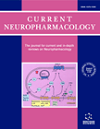
Full text loading...
We use cookies to track usage and preferences.I Understand
Alzheimer's Disease (AD) is the most common dementia in clinics. Despite decades of progress in the study of the pathogenesis of AD, clinical treatment strategies for AD remain lacking. Apigenin, a natural flavonoid compound, is present in a variety of food and Chinese herbs and has been proposed to have a wide range of therapeutic effects on dementia.
To clarify the relevant pharmacological mechanism and therapeutic effect of apigenin on animal models of AD.
Computer-based searches of the PubMed, Cochrane Library, Embase, and Web of Science databases were used to identify preclinical literature on the use of apigenin for treating AD. All databases were searched from their respective inception dates until June 2023. The meta-analysis was performed with Review manager 5.4.1 and STATA 17.0.
Thirteen studies were eventually enrolled, which included 736 animals in total. Meta-analysis showed that apigenin had a positive effect on AD. Compared to controls, apigenin treatment reduced escape latency, increased the percentage of time spent in the target quadrant and the number of plateaus traversed; apigenin was effective in reducing nuclear factor kappa-B (NF-κB) p65 levels; apigenin effectively increased antioxidant molecules SOD and GSH-px and decreased oxidative index MDA; for ERK/CREB/BDNF pathway, apigenin effectively increased BDNF and pCREB molecules; additionally, apigenin effectively decreased caspase3 levels and the number of apoptotic cells in the hippocampus.
The results show some efficacy of apigenin in the treatment of AD models. However, further clinical studies are needed to confirm the clinical efficacy of apigenin.

Article metrics loading...

Full text loading...
References


Data & Media loading...
Supplements

